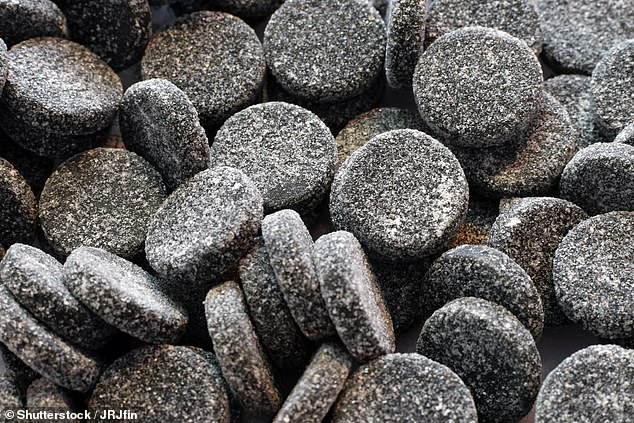All sorts… of wrong: Nurse, 56, is rushed to hospital fearing a stroke but is shocked to discover he has accidentally poisoned himself with popular treat!
- Joacim Osterstam almost died last month due to extra salty licorice
A nurse was rushed to hospital fearing a stroke – but was shocked to discover he had accidentally poisoned himself with a popular treat.
Joacim Osterstam, 56, almost died last month – because he couldn’t get enough of extra salty black licorice.
The Swede from Böste near Trelleborg, in the south of the country, about a seven-hour drive from Stockholm, had been eating various licorice treats for a month when he started feeling unwell on March 8.
‘The first thing was that my vision changed. “I had trouble focusing at a distance and at first I thought it was time to change glasses,” he told the Swedish newspaper Aftonbladet.
To make himself feel better, Joacim continued to snack on his favorite treat, but his symptoms continued to worsen.
Joacim Osterstam (pictured in hospital after his ordeal), 56, almost lost his life last month – because he couldn’t get enough of extra salty black licorice

The Swede from Böste near Trelleborg, in the south of the country about a seven-hour drive from Stockholm, had been eating various licorice sweets for a month when he started to feel unwell (file image of salty licorice)
He developed headaches and stomach aches before he started feeling unsteady on his feet due to recurring muscle cramps in both legs.
“I ended up not being able to even go outside with the dog and then my partner wanted me to contact the health centre,” he said. Once there, a doctor sent him to the emergency room in a taxi.
But even the walk to the emergency room on March 11 was difficult and painful for Joacim, making him feel ’86’ instead of 56.
He was quickly scanned to rule out a stroke, but blood tests soon revealed the real cause of his symptoms.
Joacim had a severe potassium deficiency with a low and ‘life-threatening’ value of 1.8 – the normal level is around 3.5.
Doctors didn’t know what was causing this massive drop in his potassium levels until someone asked Joacim if he liked the sweet treat – and quickly determined that his symptoms were caused by the massive amounts of salty licorice he was consuming.
The liquorice enthusiast had to stay in the hospital for a week, where he received a potassium drip and his heart rate was measured.
When he was finally discharged from hospital, he was still quite wobbly on his legs and checked in for physiotherapy. He must also use walking sticks.
However, another health episode from licorice seems unlikely, as Joacim said he now can’t think about the sweet without feeling nauseous.
‘Now when I imagine taking licorice in my mouth, I feel bad. I will probably never eat licorice again. Now there is zero tolerance,” he said.
Even without eating more licorice, Joacim still has a long recovery ahead of him.
Just last week he had to postpone a planned motorcycle ride to the hospital, the German newspaper reported Image: ‘My potassium level had dropped again and I had to be treated again.’
